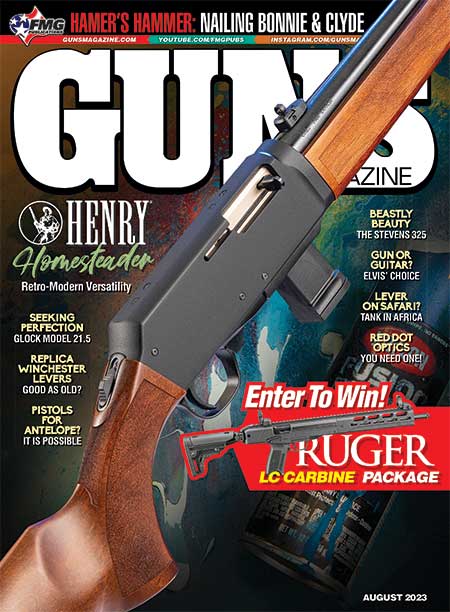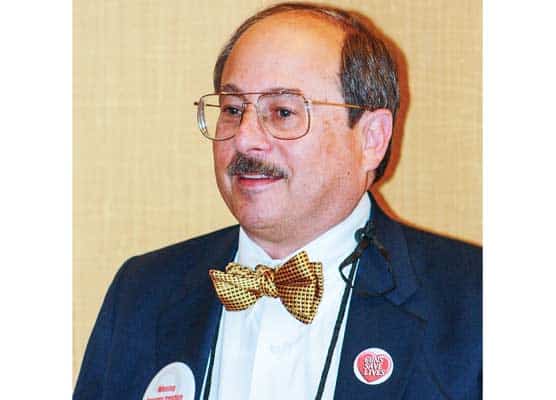Burt Spiller’s Parker
Dreams Do Come True
High-quality gunning irons cause me to salivate. Gorgeous case colors, tightly figured scrollwork or exhibition-grade wood are head turners for sure. High grades in mint condition sing to me and if I’m not careful they can put a dent in my net worth.
Guns Of Distinction
Shotguns owned by writers sometimes occupy rarefied air. Bo Whoop is an example that turned the shotgunning world upside down. Bo Whoop was painstakingly built by Burt Becker for Tennessee’s legendary writer Nash Buckingham and it was a custom-made Super Fox 12-bore with the unique-of-the-era 3″ chambers delivering a 90% pattern at 40 yards. After being lost for 57 years, its discovery — and then sale — at auction brought the third-highest sum ever paid for an American shotgun: $201K.
Other upland shotguns owned by writers sit in private collections or museums. Gene Hill was famous for two shotguns. His 16-gauge Greener was heavily used for upland hunting and he shot his 28-gauge John Blanch hammergun for dove.
George Bird Evans carried a Purdy as much as he shot his Fox Sterlingworth. Tap Tapply favored a Winchester 21 while William Harnden Foster loved his Parker VH 28 gauge. Frank Woolner achieved legendary status for writing about how he improved the swing of his Winchester Model 59 by shortening the barrel with a hacksaw. Gorham “Grampa Grouse” Cross shot an L.C. Smith. The list goes on.
These scatter guns are to us wing shooters what Excalibur is to King Arthur. They began as the tools of the masters who owned them and over time, they became legendary. Legends motivate us, they inspire us and they ground us with a connection to our wing shooting heritage.
Humdrum Grade
But what do you do when you find a shotgun of such provenance but is thoroughly utilitarian and pedestrian in every way? You shoot it, that’s what. And on a crisp October day a few years back I visited my Eastern Pennsylvania friend Morris Baker. Baker is a hunter, shooter and collector, and he’s also the owner of RST/Classic Shotshell Company. We were chatting about grouse and the woodcock migration when Baker lit up, the same way a kid does when he finds a secret stash of freshly baked chocolate chip cookies.
“Hey, do you want to see Burt Spiller’s Parker?” he asked. A moment later he returned with the shotgun.
Burt Spiller was considered “the poet laureate of [ruffed] grouse hunting,” and his Parker was pedestrian, a VH. The classic 20-gauge upland grouse gun was delivered on an O-frame with 26″ barrels on which the barrel brown was faded. The receiver was silver, with the case colors being worn from decades of sweat from hands, rain, snow and rubs against brush.
The red Hawkins Pad was packed down hard, dry rubber. As the story goes, the pad was exposed to heat from a fireplace, and the tip rolled down giving it an unmistakable charm. If ever there was an honest gun, this was it, for it spent far more time behind dogs in the woods than in a cabinet.
The more things change, the more they stay the same and Spiller couldn’t afford a nice gun on his writer’s salary. His friend and hunting buddy Gorham Cross gifted him the Parker. Cross’ family ran a printing and publishing company that likely lead to the publishing of his book Partridge Shortenin’: Being an Instructive and Irreverent Sketch Commentary on the Psychology Foibles and Footwork of Partridge Hunters under the pseudonym Grampa Grouse (“G. Grouse”).
A Shooter
At the time, the Parker VH was the good quality but affordable gun in the catalog. It was the most popular model sold by Parker Brothers and the 78,000 firearms made in gauges 10-.410 accounted for about 25% of the company’s total firearm production. Spiller’s Parker was a hammerless model made from Vulcan steel barrels; the wood was a straight-grain American walnut Plain Jane. There was only a simple border engraving and light engraving on the fore end and the pistol grip. At the time, the fit-and-finish was excellent for a gun born to be a shooter.
Older American shotguns are well known for their significant drop at comb and heel. Some models have so much drop they more closely resemble the working end of a hockey stick. Burt’s Parker was no exception and when I threw it up to my cheek, my eye had the clearest view of the texture on the safety.
Baker acquired Burt’s Gun unceremoniously at a New Hampshire auction. The sale enjoyed far less fanfare than that associated with Bo Whoop, a fact reflective of the increased popularity of waterfowl over ruffed grouse. When the gavel dropped, the cost of the gun was equal to the current market value. No additional value was placed on the background, but to me the experience was priceless.
“Wanna shoot it?” Baker asked.
“Do what?”
“Grab that case of shells, let’s go.”
A mile away was my favorite type of clays course. Ernie Hausmann’s Hidden Hollow Sporting Clays plays home to the Northeast Side-by-Side Championship and soon will be the host of the Vintage Cup. There are no specialty shots like bateaus launched from a high tower at a distance, or minis and chandelles. Set in the rolling hills of Eastern Pennsylvania, the course wonderfully orchestrates flights representative of grouse, woodcock, dove, quail and other shots common with the uplands. These presentations matched perfectly with Burt’s gun and its cylinder/improved cylinder chokes.
Fantasy Realized
I dropped a pair of 2 ½”, ¾-oz. 20-gauge RST shells into the chambers. To shoot as Burt did, I had to have faith for how could I hit with a stock with way too much drop and was much too short? Score was the last thing on my mind — to make my dream come true, all I needed was one broken standard disc. Just one.
Pull, dead bird. Pull, another. It went on this way for the majority of the course, so much so I questioned if fit was even important or if properly matched chokes and load ruled the day? No one ever mentioned Excalibur’s weight, no one described its length or edge. Some things just are and Burt’s gun simply didn’t miss. If I had a flush bank account, I’d have made Morris an offer he couldn’t refuse.
Seeing guns of provenance in a museum is one thing and handling them is entirely different, but shooting one? Heck, isn’t it the stuff dreams are made of?








